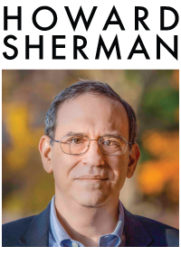“Broadway” is an industry that not only produces theatre events in mid-town New York City, but it’s also the primary engine and idea factory of American theatre, and arguably, theatre worldwide.”
I’m sorry, but I can’t read a statement like that and keep silent.
The above quote is taken from a blog by Jim McCarthy, CEO of Goldstar and one of three organizers of TEDx Broadway, which will take place this January for the second year. Jim organizes the event along with producer Ken Davenport and Damian Bazadona of Situation Interactive. I attended last year’s event and furiously live-blogged it; there was some very interesting conversation that day and what struck me about it was how little it spoke specifically to Broadway and how much of the content spoke to issues of theatre as a whole. But as much as I’ve enjoyed meeting Jim and communicating with him subsequent to last year’s event, my response to his premise is at least dismay, if not outright offense.
I have spent my career in not-for-profit theatre organizations, the last of which, the American Theatre Wing, is inextricably linked with The Tony Awards, an honor for work in the Broadway theatre, clearly defined as 40 theatres on the island of Manhattan. The Wing gave me a ringside seat at the workings of Broadway, but never for a moment did I forget that I was running a not-for-profit organization, nor did I ever declare or think myself to have “gone Broadway,” despite the jokes of my friends and the assumptions of many in the broader theatre community. My love and dedication is to theatre, all of it, and Broadway is only one segment of a very wide-ranging art form. It is predominantly, but not exclusively, commercial. While its individual productions, running for years, playing in other countries and across the U.S. on tours and licensed productions, may reach the widest audience for individual shows, there are literally countless theatrical productions in this country every year far beyond Broadway’s annual average of perhaps 38.
That is why I take exception to falsely subsuming American Theatre under the banner of Broadway: because Jim has it backwards. Broadway is part of The American Theatre, but the majority of American Theatre is not Broadway.
There’s a second misleading statement in the quote from Jim, because Broadway simply is not “the idea factory of American theatre.” Very few productions reach Broadway without having first been developed and produced in not-for-profit theatre. This even holds true for British and Irish imports, which emerge from the subsidized sectors there onto platforms of ever-greater success. I’m not saying that Broadway never originates valuable new work, but I’d lay odds that more than half of the productions each year have achieved success after benefiting at some point from the efforts of not-for-profit companies.
Because I view Broadway as a part of the American Theatre, I neither love nor hate it as an entity; frankly, it’s a collection of theatres and productions, not a singular body. I have seen great work on Broadway, just as I have in small resident companies. Broadway is one model of producing, one that can yield great rewards for its investors and artists, but one which also benefits from the vestigial patina that remains from the days when it was indeed the primary source of theatre in America. Yet the coalescing and expansion of the resident theatre movement in the 1960s (there were regional theatres decades before that) fundamentally altered the balance of American theatre. While every aspect of theatre is perpetually challenged by economics, it is the not-for-profits, here and abroad, that now lead artistically; Broadway benefits from scale, from history and from its proximity to the majority of the country’s cultural media being so close by.
I don’t think I’m saying anything radical here, but it’s a message that bumps up against the tide of immutable conventional wisdom, because the mystique of Broadway is so powerful. Having worked alongside the Broadway League on The Tony Awards, in a mutually beneficial partnership, I have watched their increasingly strong efforts to brand Broadway, to make audiences internationally ever more aware of it, to unify its constituents, and to hone its image. They face a challenge, because “Broadway” is not a trademark, it cannot be controlled the way a corporate brand can, so they fight an uphill battle at times, while at others they reap the rewards of being the theatrical equivalent of Hollywood’s “dream factory.”
I learned last year that only official TED events can cover “topics,” while the offshoot TEDx conferences must be “geographic.” Indeed, the TEDx Broadway organizers told me of their challenges convincing the TED organization that Broadway is a locale, not a discipline, so they could hold their event; “TEDx Theatre” would not have passed muster. In that usage, I understand their rationale.
But they mislead their potential audience by using Broadway as a catch-all phrase; some of the NFP folks might stay away thinking it’s not for them, which is actually a shame. I support what Jim, Ken and Damian are doing with TEDx Broadway and if I haven’t made myself persona non grata with this piece, I hope to attend again this year. But let’s not confuse positioning and marketing with facts, especially since we’ve long been told how essential truth in marketing is to success. Let’s remember that Broadway actually prides itself on its exclusivity and grant them that, without judgment or rancor. But as for The American Theatre, there’s vastly more to it than just Broadway, and the theatrical idea factory is not restricted to 40 theatres in Manhattan by any stretch of the imagination. Period.



